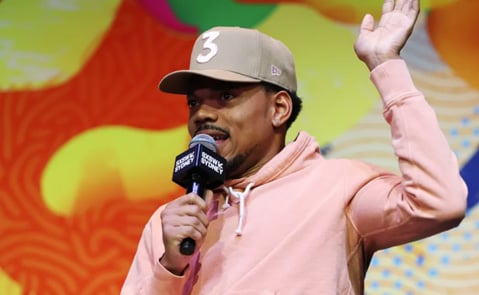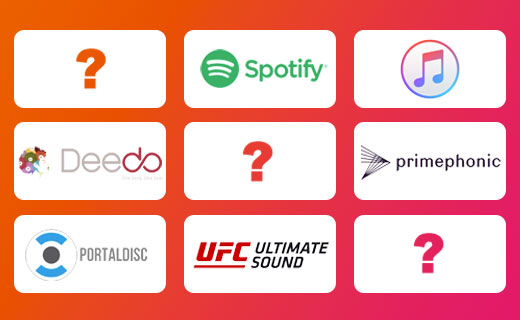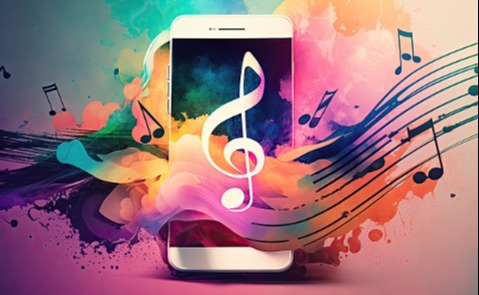
Taylor Swift recently entered the Guinness World Records with the most streamed album on Spotify.
Fewer artists manage such achievements in music streaming services. This is because, firstly, there’s so much content that it’s challenging to stand out from the crowd, and secondly, new music uploaded to streaming services is likely to be listened to (and categorised) by an AI before a human hears it.
Mainstream platforms are designed to drive the right content to the right audience. It’s all about user engagement rather than the development of artists.
Niche audiences interested in a specific genre or independent artists in their region might not find what they want to listen to.
Several non-music brands and music startups have pointed out this problem and decided to do something to rally their community while supporting talents. As a result, they have built alternatives to Spotify for their niche market.
Discover in this article how you could also use a music service to attract your audience and engage with them.
Showcase your local talents on your digital music platform
Some music streaming platforms have reached a point of 100 million tracks available online and continue releasing 100,000 new tracks a day. Talk about finding a needle in a haystack when it comes to discoverability!
But is there such a thing as too much content for users?
Local music can struggle to get the recognition it deserves, and fans can’t easily access this content.
By building your niche digital music platform, you could differentiate your offer from the competition while offering something your audience likes and can’t find on mainstream streaming services.
Focus on delivering a service to your region and work with local creators struggling to emerge amongst international artists.
Localised music services already exist and are doing well in their markets. Some great examples are Boomplay or Waw Musik in Africa, Gaana in India, and Joox in Asia.
So why make an app dedicated to a specific local market?
Because you’ll speak your audience’s language! The critical factor here is the ability to adapt to your market.
First, tailor your content offer to your users. A specialised digital music platform means a more curated catalogue with qualified recommendations and depth in your niche.
But it is not just about content. Every market has its consumption habits. It’s up to you to adapt to them.
For example, monthly subscriptions by credit card are the norm in the UK, EU, Australia, and the USA.
However, although many Southeast Asia and African users own a mobile phone, they don’t have a credit card and prefer to pay in cash daily.
In this kind of market, you will need to consider daily payments, mobile wallet integration, and even vouchers.
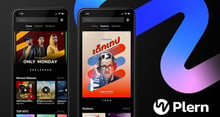 Take GMM Grammy, the largest media conglomerate in Thailand, as an example.
Take GMM Grammy, the largest media conglomerate in Thailand, as an example.
Their strategy is editorialising their catalogue and working directly with local artists and record labels. So they launched Plern Music to help Thai artists to find their place in the streaming landscape more efficiently, while their fans are sure to find their entire discography in one place.
And it works!
At least 1 million downloads in the first three months of release, putting them directly in competition with the mainstream music platforms in the country.
Music services as a brand marketing strategy
Music streaming platforms aren’t only for music companies!
These entertainment services can be the entry point to your brand’s ecosystem. For example, telcos have used this strategy for a long time, and many have been offering music as part of their mobile plans to attract and retain their customers.
So music can be a good lead for brands looking for new ways to attract new customers, but how would that work?
You can make a deal with a mainstream service such as Spotify or Apple Music and bundle it as part of your offer.
However, it is perceived more more of a reward campaign than a long-term strategy that will impact your core business. Owning your streaming service is more effective if you want to own your users, retain them long-term and collect data to help you understand your consumers better.
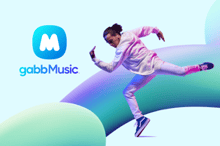 That has been Gabb Wireless’ approach. They had noticed that parents were struggling with giving access to online platforms to their children while being able to filter what they do and see. So they developed Gabb Phones.
That has been Gabb Wireless’ approach. They had noticed that parents were struggling with giving access to online platforms to their children while being able to filter what they do and see. So they developed Gabb Phones.
Gabb Wireless’ phones come with mobile plans, all designed for kids. Then they created value-added services only accessible on Gabb Phones, including music, as it resonates well with their young target audience.
They launched Gabb Music, the first 100% safely curated music service for kids, where any tracks with inappropriate language are filtered out!
Music has become an appealing selling point to get people into the Gabb universe while helping the brand increase ARPU (average revenue per user).
For some brands, music is also a way to increase user engagement across all their services.
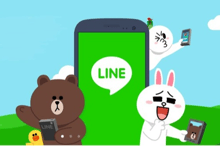 For instance, Japan-based LINE is a social media giant that owns the biggest messaging app in Japan, Thailand and Taiwan.
For instance, Japan-based LINE is a social media giant that owns the biggest messaging app in Japan, Thailand and Taiwan.
LINE Group offers many value-added services on top of its messaging app to keep people interacting within its ecosystem. FinTech, games, entertainment, shopping, you name it!
Its music service, LINE Music, is Japan’s biggest domestic streaming service. They have created bridges between their services so users can use the music of LINE Music in Line Messenger to boost the app engagement and, ultimately, the business’ core revenue.
These examples bring us to communities, the key to the strategy behind music platforms because music is a great marketing tool for any kind of company as long as it resonates with your audience and is part of your core strategy.
Create a community and develop your brand awareness
Creating and building in connection with your community is vital. And it goes for any kind of music company. In that field, the music industry knows its way around.
Case in point: one of the best manufacturers of audio speakers on the market, SONOS, has been developing their own musical environment.
How could they reach out to their customers better than by offering a tailor-made music service?
So the company came up with SONOS Radio, an app providing all users free content, from radio to curated discovery playlists. Of course, SONOS Radio is provided with the purchase of any of its products. SONOS becomes an entire environment, creating an evident community around its brand. A smart move!
To go even further, let’s zoom out and take our focus off music companies for a minute.
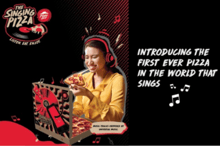 Have you ever heard of turning a pizza box into a music box?
Have you ever heard of turning a pizza box into a music box?
Pizza Hut did that to ensure their customers didn’t forget about them. The Singing Pizza was an operation led in Malaysia to ensure that the experience would remain memorable even if you didn’t stay to eat.
A QR code would be given with to-go pizza boxes to access playlists to listen to while eating. Those were refreshed every two weeks, so there would always be new tracks to discover with Pizza Hut.
So music gathers once again around a brand, this time with pizza.
As you can see, many of these music platforms don’t have an entire international catalogue. However, their niche audiences are invested in them, making their model more interesting to follow.
---
So here you have it.
Music streaming services powered by brands allow them to build and engage with communities, thereby indirectly supporting their core business. And the best part is that creating a streaming app like Spotify can be straightforward if you have the right partner.
You can reach out to Tuned Global and take advantage of our B2B streaming solutions for brands to get your service in market quickly.
Our team is here to answer any of your questions and help you customise the experience you want your users to have with you.
You create the goal, and we help you make it heard. As simple as that!
This guest article was first published on Hypebot.

